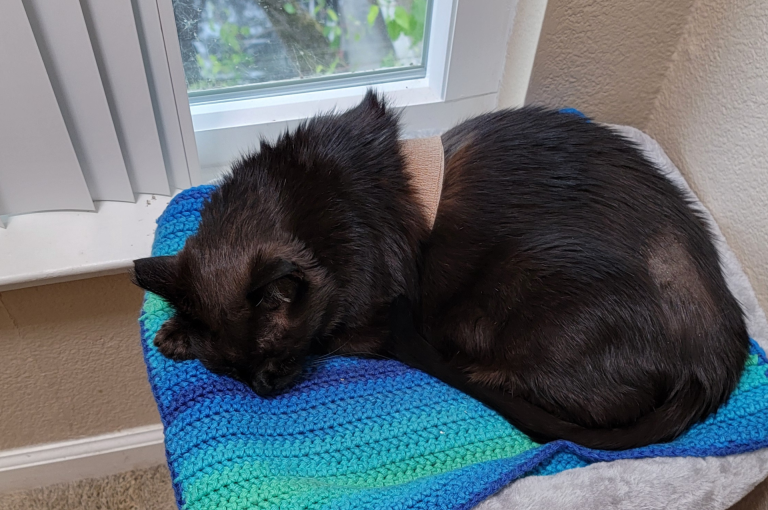Learning to test your cat’s blood sugar at home might feel intimidating at first—but it’s one of the most important steps you can take in managing feline diabetes. This page will guide you through the entire process: what tools you need, how to do it, tips for success, and even real stories from caregivers who’ve been in your shoes. Home testing reduces stress, cuts down on vet costs, and helps you avoid dangerous lows by giving you real-time insight into your cat’s blood glucose levels—all from the comfort of home.

Why Home Testing Matters
Home blood glucose testing is a vital part of managing feline diabetes. Once cats get used to it—which often takes just a few sessions—most tolerate it without issue. Testing at home reduces stress for your cat, eliminates the cost and hassle of frequent vet visits, and allows for tighter control of blood glucose levels. Perhaps most importantly, it can help you detect and prevent dangerous hypoglycemic episodes. However, you should always discuss your testing approach and any results with your veterinarian before making insulin adjustments.
Materials You'll Need
To begin home testing, you’ll need a glucometer, compatible test strips, and lancets (often included with a lancing device). Optional but helpful items include a warm rice sock or washcloth to improve blood flow, a small flashlight to locate veins, tissues or cotton balls for post-test pressure, and possibly an Illumavein for easier vein visualization. Some caregivers use microcapillary tubes, but many glucometers now wick blood directly from the ear or paw. Keep everything organized and easily accessible in your preferred testing space.

Tips for a Smooth Testing Experience
Success starts with a calm environment and a relaxed mindset. Cats quickly pick up on your energy, so confidence and calmness are key. Use cuddles, praise, or treats—whatever motivates your cat—to make testing a positive experience. You may need to try several positions: sitting with your cat in your lap, placing them between your knees, using a table or testing station, or wrapping them in a “kitty burrito” towel. Find what works for both of you, and stick to it.
Warm the testing area (ear or paw) before pricking to increase blood flow. Use a warmed rice sock, wet washcloth in a plastic bag, or simply massage the area. When pricking manually, aim at a 45-degree angle and press gently. Apply pressure afterward to avoid bruising, and consider using a dab of Vaseline or Neosporin with pain relief to help the blood bead and promote healing.

The Method: Step-by-Step
Gather and organize all your supplies.
Position your cat comfortably.
Warm the ear or paw to improve circulation.
Locate a capillary (vein) near the ear edge or the large paw pad.
Prick the site with a lancet or lancing device.
Let a small droplet of blood form, then touch it to the glucometer test strip.
Wait for the meter to register the reading.
Apply gentle pressure to stop the bleeding and record the result.
Reward your cat!
Some caregivers use microcapillary tubes to collect blood and transfer it to test strips, but most modern meters don’t require this.
Ear vs. Paw Testing
Ear sticks are the most common and well-documented method. By shining a flashlight from behind the ear, you can see the marginal vein. Many cats tolerate ear pricks well, especially once the area becomes slightly “seasoned” from regular use.
Paw pad testing is a great alternative, especially if the ears need a break. Use a device with adjustable depth for better results, and press firmly on the large rear foot pad. Some cats don’t react at all. As with ear testing, be sure to apply pressure afterward and reward your cat.
Common Challenges and Fixes
It’s normal to feel frustrated during the learning curve, but don’t give up. Some common early issues include not getting enough blood, cats flicking their ears, or the sample drying before it hits the strip. Warmth, correct lancet depth, and calm repetition help overcome these problems. Avoid alcohol swabs on your cat’s skin, as they can inhibit bleeding and irritate the area.

Real Experiences from Caregivers
Many caregivers have shared their personal experiences and testing tips, such as using spare bedrooms as “procedure rooms”. Some prefer the control of manual lancets over pens, while others swear by their adjustable lancing devices. Regardless of the method, the consensus is clear: home testing leads to better control, fewer complications, and peace of mind.
Even if your vet is skeptical, know that thousands of cats are thriving because their caregivers test at home. These are not unusually docile cats—they’re regular pets who have adapted to a routine that keeps them healthier and safer.
For more real-world examples and stories, head over to our message board where thousands of caregivers are eager to help you get started.









